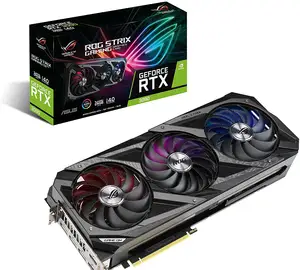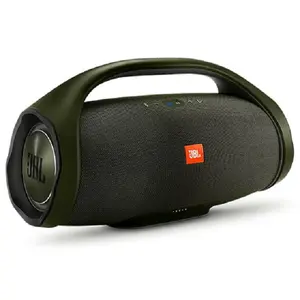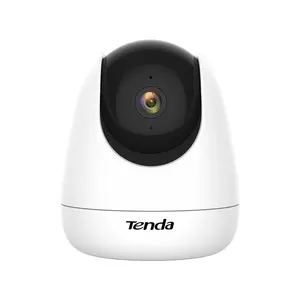Popular in your industry











































































Related Searches:










































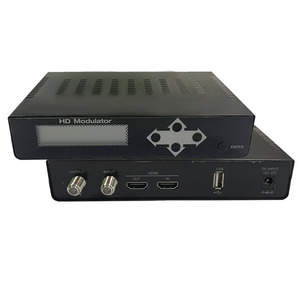


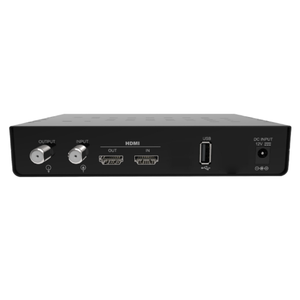
















































































Top categories
About digital tv headend rf modulator
The digital TV headend RF modulator stands as a pivotal element in digital broadcasting, acting as a conduit between content creators and viewers' displays. It plays a crucial role in transforming video input into radio frequency output, ready for decoding by digital receivers. In the rapidly evolving media landscape, the modulator's contribution to the flawless delivery of high-definition digital content is irreplaceable.
Types and Characteristics of Digital TV Headend RF Modulators
Varieties of digital TV headend RF modulators cater to distinct broadcasting requirements. Some are crafted for modest operations, perfect for community cable services, while others cater to expansive networks with capabilities such as multiple input channels and high-definition content support. Certain modulators are fine-tuned for specific protocols, like DVB-C for cable or ISDB-T for terrestrial transmission. The selection of a modulator is critical to broadcast efficiency and quality, necessitating a choice that meets the technical and operational demands of the enterprise.
Structure and Operational Components
Comprising several integral components, the digital TV headend RF modulator operates through a series of stages. Signals are received via interfaces such as ASI or RJ45 and processed by the internal encoder, which compresses and digitizes the signal for modulation and subsequent RF transmission. With digital displays and remote control functionality, the modulator allows for instantaneous adjustments and monitoring, safeguarding broadcast integrity continuously.
Materials and Construction
Constructed from premium metal materials, the digital TV headend RF modulator is built for endurance and protection against electromagnetic interference and physical harm. These materials are selected not only for their robustness but also for their heat dissipation properties, as modulators can produce considerable heat. This sturdy construction not only prolongs the device's life but also ensures consistent signal transmission.
Business Usages and Applications
In the commercial sphere, the digital TV headend RF modulator is essential across various platforms, from neighborhood cable networks to major broadcast hubs. It proves indispensable in live event streaming, facilitating instantaneous content distribution to vast audiences. Within IPTV systems, the modulator is key to delivering television content via internet protocol networks, transforming viewer access and media consumption. Beyond its technical capabilities, the modulator also serves a commercial function, enabling businesses to broaden their audience and enhance the viewer experience.
Functions and Tasks
The digital TV headend RF modulator's primary task is to transmute digital video signals into a modulated RF output. This encompasses encoding, compressing, and modulating the signal, as well as ensuring compatibility with diverse digital standards for accessibility across various receivers. More sophisticated modulators may also offer multiplexing, combining several video streams for transmission over a singular channel.
Features and Unique Selling Points
Notable features of the digital TV headend RF modulator include intelligent operation with programmable settings and remote management, granting users exceptional control over the broadcast process. The ability to accommodate multiple input formats and high-definition content stands as a significant advantage, setting it apart from less adaptable market offerings.
Benefits and Positive Outcomes
The advantages of deploying a digital TV headend RF modulator are multifaceted. Broadcasters benefit from the capacity to transmit superior content both reliably and efficiently. For viewers, this translates into enhanced visual and audio quality. The modulator's sophisticated features, such as remote control and digital display, streamline broadcasting operations, leading to lower operational costs and improved service provision.
How to Use and Operate Effectively
Effective operation of a digital TV headend RF modulator demands a comprehensive grasp of its interface and capabilities. Users should be adept with input and output configurations, modulation choices, and the interpretation of the digital display. To achieve peak performance, it is imperative to maintain updated firmware and to tailor device settings to the broadcasting network's specifications.
How to Choose the Right Modulator
Selecting the appropriate digital TV headend RF modulator involves an in-depth evaluation of broadcasting necessities. Factors to consider include channel quantity, required input and output types, and the level of control desired over the broadcast process. It is also vital to choose a modulator that is compatible with the intended broadcasting standard and capable of accommodating future technological advancements and expansions.
How to Clean and Maintain
Regular cleaning is essential to maintain a digital TV headend RF modulator, preventing dust build-up that can cause overheating and signal disruption. The device should be situated in a ventilated area and periodically inspected for wear or damage. Timely firmware updates are crucial for sustained compatibility and security.
How to Install
Installation of a digital TV headend RF modulator necessitates a thorough comprehension of the broadcasting system's framework. Following manufacturer instructions, the modulator must be connected to the video source and network infrastructure. Proper grounding and shielding are imperative to avert signal leakage and interference.
How does the digital TV headend RF modulator integrate with existing systems?
Designed for smooth integration with current digital TV headend systems, the digital TV headend RF modulator accepts a range of input formats and provides an IP output for straightforward distribution within the headend infrastructure. Its adherence to standard protocols ensures effective communication with other system components.
What are the considerations for setting up a digital TV headend system?
Establishing a digital TV headend system demands meticulous planning and attention to various factors. These encompass choosing the correct modulator, gauging system capacity, ensuring compatibility with transmission standards, and planning for scalability. The system's security and support for high-definition content are also of paramount importance.
Can the digital TV headend RF modulator support high-definition content?
Indeed, the digital TV headend RF modulator is equipped to handle high-definition content. Contemporary modulators are adept at managing various resolutions, including 1080P, to ensure the broadcast of high-quality video streams. Their advanced encoding and modulation capabilities guarantee efficient HD content transmission with no quality compromise.
